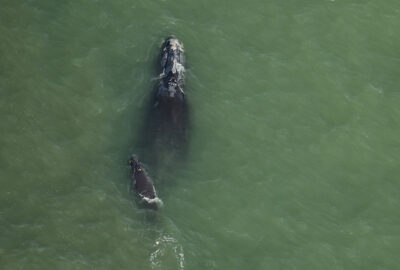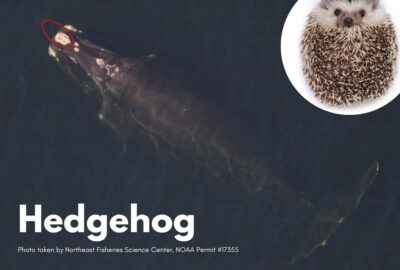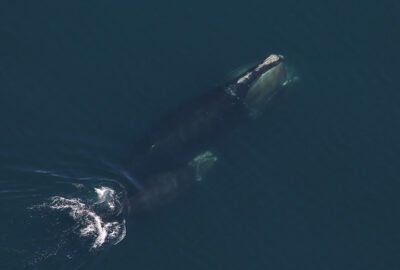Incorporating prey fields into North Atlantic right whale density surface models
By Camille H. Ross, Jason J. Roberts, Daniel E. Pendleton, Damian C. Brady, Karen Stamieszkin, and Nicholas R. Record
Originally published in Endangered Species Research in September 2025

Abstract
Predictions of North Atlantic right whale Eubalaena glacialis distributions are an increasingly important tool used in conservation efforts for this Critically Endangered species. Right whales feed upon calanoid copepods, primarily Calanus finmarchicus. Incorporating prey distributions and characteristics into right whale density surface models (DSMs) has the potential to improve predicted whale distribution and provide a more mechanistic basis for interpretation. To explore this possibility, we tested different prey and prey proxy covariates to represent prey within a right whale DSM. We then assessed the relationship fitted to each prey or prey proxy covariate and determined which covariates added the most predictive power. The top-performing model included a combination of covariates representing high-density C. finmarchicus, Centropages typicus, and Pseudocalanus spp. aggregations and resulted in density predictions consistent with the observed distribution patterns of right whales. Predicted density was most prominent in the deep basins of the Gulf of Maine and the Great South Channel. Density generally increased in the summer and decreased in the winter, consistent with the current understanding of right whale foraging phenology. Continued monitoring of prey resources and development of prey fields for use in models are imperative to successful conservation of endangered marine predators.
Full Text





